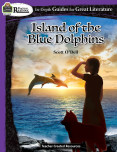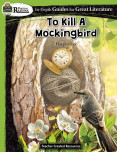We use cookies to make your experience better. To comply with the new e-Privacy directive, we need to ask for your consent to set the cookies. Learn more.
As students dissect the information in novels by doing various activities in these guides, they will discover intricate details about each book and appreciate a deeper understanding of the text. Guides are written to the teacher with complete lesson instruction. A large part of the book study consists of students keeping an interactive novel log. Students need a three-ring binder, blank paper, and the reproducible worksheets from the guide to complete the novel log. After a few chapters or sections of the book are read, students complete activities in the novel log then other activities in the literature guide. Some activities include answering comprehension questions, filling in graphic organizers, creating a timeline of events, and more. Answers are included in the back.
In-Depth Guide for Any Picture Book and In-Depth Guide for Any Novel for ages 6 and up and grades 3-5 are available to use with any picture book or novel. These include various activities to teach key literary terms. The guide for older students involves keeping an interactive novel log.













